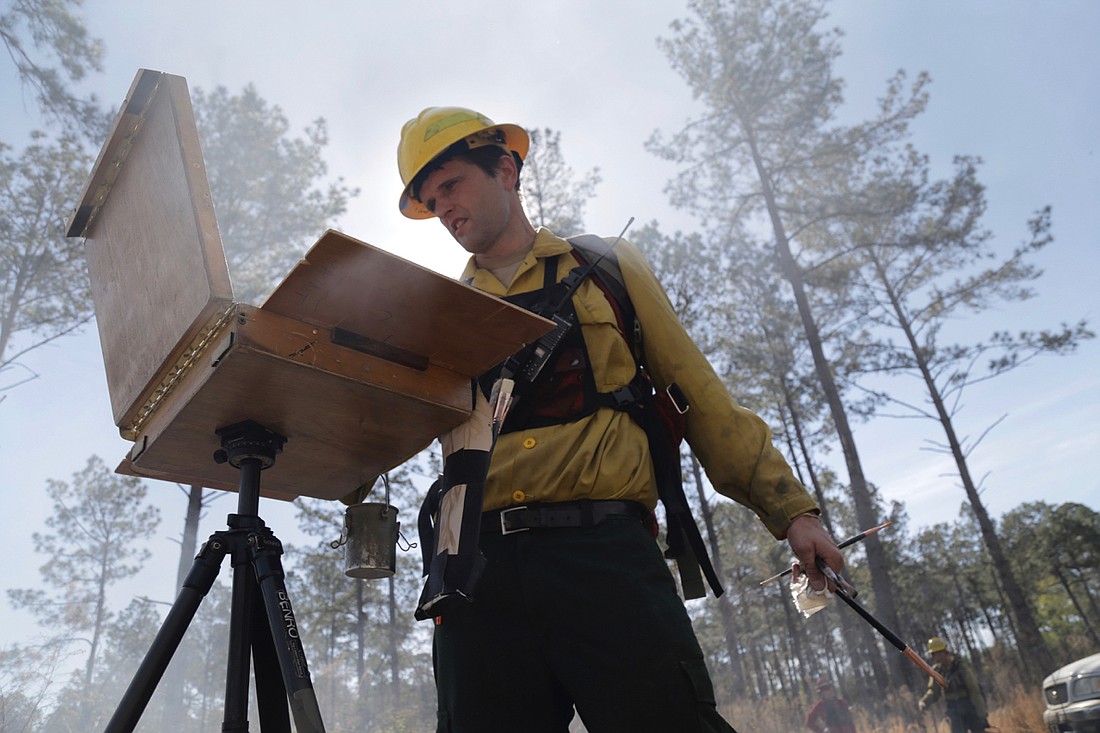- November 25, 2024
-
-
Loading

Loading

Ormond Beach resident Eric Breitenbach spent four years searching for the south that one of America's first naturalists saw in in the 1770s.
It was a journey decades in the making; one that Breitenbach kept in a folder on his desktop for years after he took a sabbatical in the late 1980s from Daytona State College to photograph each county in Florida. Right before he left, an English professor handed him a copy of "Bartram's Travels," by William Bartram, a book published in 1791.
That sparked the inspiration that would eventually lead to "Cultivating the Wild," a one-hour documentary to premier at DSC on Jan. 29. It details the efforts of six people working to restore the South to what it once was, and why it matters. All six share a common denominator: A love for the nature Bartram saw and documented.
“The writing is beautiful," said Breitenbach of Batram's book. "The descriptions are very intense and he also wrote some of the most beautiful things about Native Americans and the early settlers that were in the south at that time."
In 2015, Breitenbach, a DSC professor, drove around the Southeastern United States and met individuals who had written what he believes to be the best books on Bartram. One of those people was Dorinda Dallmeyer, a professor at the University of Georgia and author of "Bartram's Living Legacy: The Travels and Nature of the South."
He asked her to join him in helping to produce the film, and though she hadn't ever done anything similar, Dallmeyer agreed.
“She was kind of encouraged by my enthusiasm, and I was encouraged by her knowledge," Breitenbach said.
There were a lot of moving parts to take care of during the filmmaking process, Dallmeyer said. One was fundraising.
The film's budget came in at $70,000, and a Kickstarter campaign brought in over $30,000 of that.
“All of us were very grateful for the amount of support that we got from people, some as far away as India for the film," Dallmeyer said. "We never would have known that had we not used Kickstarter to be able to reach people we didn’t even know existed out there.”
The film also had to overcome several logistical challenges, like making sure they had boats to go out in the river and finding the right cinematographers to capture the numerous scenes of wildlife. A total of 35 people worked on "Cultivating the Wild," Breitenbach said.
And once filmmaking was done, it was time to edit. There was 60 hours of footage they needed to cut down to just one.
Painter Philip Juras is one of the six individuals featured in the film. He pays tribute to Bartram's descriptions of the south by seeking the places that best resemble what Bartram saw and capturing it on canvas. Sometimes, that means painting during a prescribed burn in forest.
“He showed me the landscape that I’d always been looking for," Juras said.
It's through inspiration that people begin to care about something, he said, and this film is a "feast for the eyes" in the respect of the scenes and the people in it.
“It’s a view on this world of nature that people rarely will get to see themselves, and it’s encapsulated in this film in this beautiful and inspiring way," Juras said.
Dallmeyer said she hopes people who watch the film will see the impact an individual can make, and that it help mark a future legacy of conservation.
“[Bartram’s] voice is there, and his work is there alongside the people who are living parts of what Bartram left behind for us," Dallmeyer said.
With climate change and ongoing threats to the natural world, Breitenbach said the timing of the film's premiere is better than it would have been in 2015.
“It’s kind of great that the film is coming out now rather than three years ago because those issues are first and foremost in a lot of people’s minds, and it is really a plea for us to respect our natural environment, more than we currently are doing," Breitenbach said.